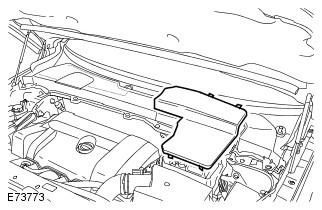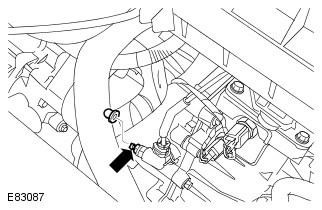2.

3. Remove the cap from the hydraulic brake reservoir.
WARNING: Do not allow dirt or foreign liquids to enter the reservoir. Use only fresh brake fluid to specification from a sealed container. It is forbidden to mix different brands of brake fluid due to their possible incompatibility.
CAUTION: Brake fluid, if it comes into contact with the paintwork, may damage it. If you spill brake fluid, remove it immediately and flush the area with water.
4. Add brake fluid to the reservoir up to the maximum mark.

5. Connect a transparent bleed tube to the clutch bleeder and immerse the free end of the tube in a suitable container containing a small amount of the prescribed brake fluid.

6. Loosen the bleeder screw two full turns.
7. Press the clutch pedal all the way. Without releasing the pedal, close the bleed valve. After tightening the bleeder valve, release the pedal. Repeat the procedure until clean brake fluid without bubbles begins to flow into the container.
CAUTION: The brake fluid reservoir must remain filled with new, clean brake fluid throughout the bleeding procedure.
8. With the clutch pedal fully depressed, tighten the air bleed screw. Tightening torque: 10 Nm
CAUTION: After venting, be sure to put a cap on the bleed screw. This will protect the air bleed screw from corrosion.
9. Add brake fluid to the reservoir up to the maximum mark.

10. Depress the brake pedal several times and check for leaks.
11. Install the tank access panel.
Comments on this article